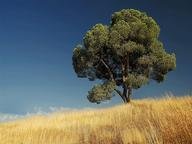Quiz Answer Key and Fun Facts
1. On 31st July 1423, English and Burgundian forces defeated a joint French and Scottish army at the Battle of Cravant. This was just one of over fifty major battles that took place during which (slightly misleadingly named) conflict?
2. The Alhambra Decree, issued by King Ferdinand and Queen Isabella, set a deadline of the 31st July 1492 for all members of a particular religious group to either convert to Christianity or be expelled from their combined kingdom of Aragon and Castile. Which group of people were affected by the Alhambra Decree?
3. In 1498, the Caribbean island of Trinidad was 'discovered' for the first time by a European explorer. Which man, whose name was given to the capital of the US state of Ohio, apparently first set foot on Trinidad on 31st July of that year?
4. The Treaty of Breda, signed on 31st July 1667, ended the Second Anglo-Dutch War. The war was part of a series fought between the English and Dutch people that took place in the 17th and 18th centuries. The First Anglo-Dutch War was won by the English in 1654, but did they manage to repeat that victory in the second war?
5. The Battle of Bloody Run took place on 31st July 1763 as part of British efforts to break the siege of Fort Detroit - the site of which is now part of the city of Detroit, Michigan. Which Native American leader (whose name was given to a brand of car owned by General Motors) had Fort Detroit under siege that year?
6. On 31st July 1790, Samuel Hopkins became the proud owner of a piece of paper signed by both George Washington and Thomas Jefferson. The item in question was the first patent issued in the US and confirmed Hopkins' rights to a new process for producing what substance?
7. Italians Lino Lacedelli and Achille Compagnoni were the first two men to climb the world's second highest mountain, known colloquially as 'The Savage Mountain'. They reached the summit on 31st July 1954 about one year after Sir Edmund Hillary's first successful ascent of Mount Everest. By what name is 'The Savage Mountain' most commonly known?
8. The 31st of July 1970 has gone down in history as 'Black Tot Day' in Britain. What event occurred to give the day this gloomy title?
9. Man might have famously first walked on the moon in 1969, but nobody had driven on the moon until 31st July 1971 when the Lunar Roving Vehicle (LRV) was deployed for the first time. During which space mission did this landmark achievement take place?
10. On 31st July 1991, US President, George H. W. Bush, and Mikhail Gorbachev, the President of the Soviet Union, signed a treaty known as START. What important issue did this treaty address?
Source: Author
Fifiona81
This quiz was reviewed by FunTrivia editor
bloomsby before going online.
Any errors found in FunTrivia content are routinely corrected through our feedback system.

